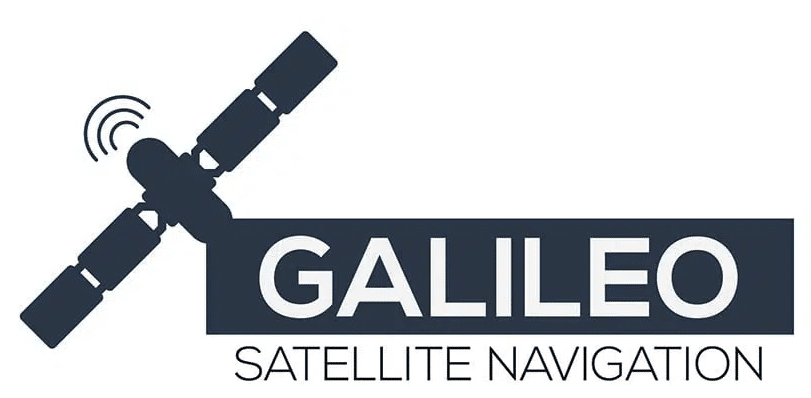What Is the Galileo Global Navigation Satellite System?
By Gianmarco Zanda
July 14, 2021
The Galileo global navigation satellite system (GNSS), named for the Italian astronomer Galileo Galilei, initially went live in 2016 in Europe. It is a highly accurate, civilian-controlled, state-of-the-art positioning system that works with GPS in the U.S. and GLONASS in Russia. As it provides dual-frequency as standard, Galileo offers real-time positioning with precision down to the meter, which other public positioning systems haven’t accomplished. This satellite system enables users to know their exact position and provides significant benefits to everyday products and services that leverage navigation, from cellular phones to vehicles.
In May 2002, the European Community and the European Space Agency formed the Galileo Joint Undertaking (GJU) to oversee the Galileo global satellite positioning program’s development. In July 2004, the European GNSS regulatory body, GSA, was created by the European Council first as a community agency and assigned the job of reviewing existing satellite positioning and navigation programs, including the European Geostationary Navigation Overlay Service (EGNOS) and Galileo.
Fifteen years and many reorganizations later, on February 11, 2019, about seven months after the last four satellites were launched, Galileo entered full service with an ultra-modern, 22-satellite constellation.

Since Galileo works with GPS, navigation is improved as there are always satellites “in view,” providing more accurate and reliable positioning for the receiving device, particularly for dual-frequency service. Even though it just started full commercial service, Galileo accounts for most of the satellites broadcasting in the E1/E5a frequency band, providing a significant contribution to the dual-frequency (high-precision) service landscape. This contribution is also particularly important for navigation in cities, where satellite signals can often be blocked or echoed (multipath) by buildings. With satellites’ time references based on rubidium and passive hydrogen masers, Galileo delivers better timing with 30-nanosecond accuracy, enabling more resilient synchronization for time-critical events, including aviation, telecommunications, financial transactions and power distribution networks.
Galileo’s Search and Rescue service cuts the time to detect emergency distress signals to around 10 minutes compared to 3 hours for other constellations. With the distress beacon position also determined more accurately, distress events, such as those at sea or in the mountains, can be located and receive help faster and more reliably.
Galileo is designed with a tiered business model to better support traditional positioning and navigation applications and foster innovation. Additionally, Galileo signals — L1, E5A and E5B — are compatible with the existing L1 GPS signal and the new L5 signal.
Services are sectioned into five groups:
As the name suggests, OS is free for use in the general IoT and consumer markets. It includes timing and positioning with about a meter precision and similar civil access codes as used by GPS and GLONASS.
SoL service is part of OS, available free of charge and not encrypted. Applications developed for it can leverage an integrity monitoring feature that warns of signal disruption problems. An application use case could be, for example, a tracker on cold-chain containers with COVID-19 vaccines, relying on minimal signal integrity for a given degree of accuracy. If something goes wrong with the satellite signals, the Galileo receiver notifies the application for an alarm or other appropriate action by the device and provider.
PRS is higher precision and encrypted for use primarily by public safety and civil authorities. Applications and devices developed for this service require the provider to secure permission for use and even testing since decryption is required for navigation, positioning or timing data to be accessed via the receiver.
SAR is a space-based service in which terrestrial devices can transmit an emergency beacon skyward. It is then picked up by any of the satellites in view, relayed and backhauled to Galileo monitoring centers and routed for action according to the application and provider. SAR is an improved solution from other constellations in terms of the latency between when the distress beacon is activated and when the application operations center receives the alert message.
CAS is encrypted and has high accuracy to the centimeter level with a service guarantee SLA compared to the OS’s best effort. Device operators and providers utilizing this level of service must pay usage and subscription fees. This service category is unique to Galileo, which was created first for commercial and civilian use. Others like GPS were primarily military endeavors with commercial and consumer use delivered as an afterthought.

With 26 satellites in orbit (including reserves) and over 1.5 billion devices worldwide enjoying the benefits of high-precision navigation, Galileo is already slated for upgrades with a new generation of satellites and terrestrial infrastructure to ensure quality service for decades to come. Following the decision to accelerate the development of “Galileo Next Generation,” ESA asked European manufacturers in 2020 to start submitting bids for the first set of the second generation (G2) Galileo satellites. They are expected to be placed in orbit around 2024. The next generation is being specified to be ultra-flexible with more software-defined and fewer dedicated hardware features.
Galileo-based geo-positioning has all the ingredients to change the game for multiple industries and application segments. Across the spectrum of business and engineering, developers and designers must step back to understand the profundity of these enhancements Galileo has brought when planning product roadmaps and considering innovation. Telit is among the first receiver module vendors to embrace the Galileo revolution and deliver a new generation receiver. Telit’s SE868SY-D module provides high precision and superior urban canyon performance with a refresh rate of up to 25 Hz, making it ideal for flying platforms such as UAVs.
Speak with our GNSS IoT experts today, and let us help you with the specification, evaluation and design of your next geo-position-enabled IoT project.